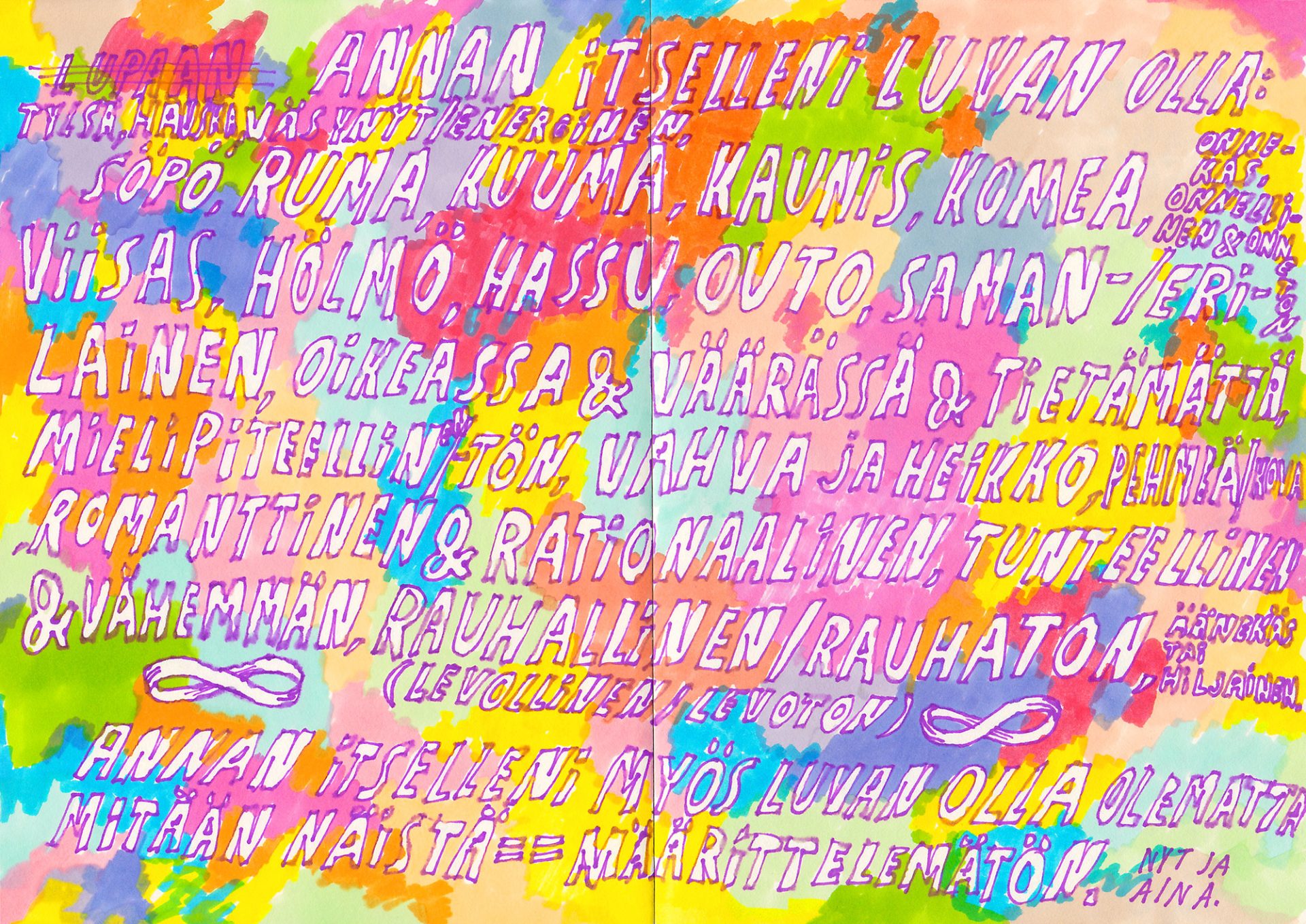This online exhibition uses visual art and poetry to explore what courage can be. The scrollable exhibition features young contemporary artists, poets and artworks from the collections of Oulu Museum of Art. It also features a small set of activities with themes for discussion and some tasks with physical activity, writing and dreaming.
Artists invited to the exhibition are musician Hassan Maikal, painter Minkki Nurmi and poet Elsa Tölli. Artists with works from the collections of Oulu Museum of Art featured in the exhibition are Minka Argillander, Aino Kannisto, Inari Krohn, Elina Luukanen, Esko Männikkö, Olavi Pajulahti, Sinikka Tuominen and Anna Tuori.
The exhibition has been curated and the learning material produced by researcher Selina Väliheikki.
The exhibition is recommended for upper comprehensive school, upper secondary school and vocational school Finnish courses and for performing arts and visual arts classes. The materials and downloadable pdf intended for schools can be found at the of the exhibition.
Olavi Pajulahti: Hoarfrost, 1984
73 x 41.5 cm
Wax tempera on paper
Collections of the Oulu Museum of Art
Photo: Mika Friman
Olavi Pajulahti (1944–) is a painter who primarily works with tempera. Overlapping colours and merging of landscapes and human figures are typical of his works.
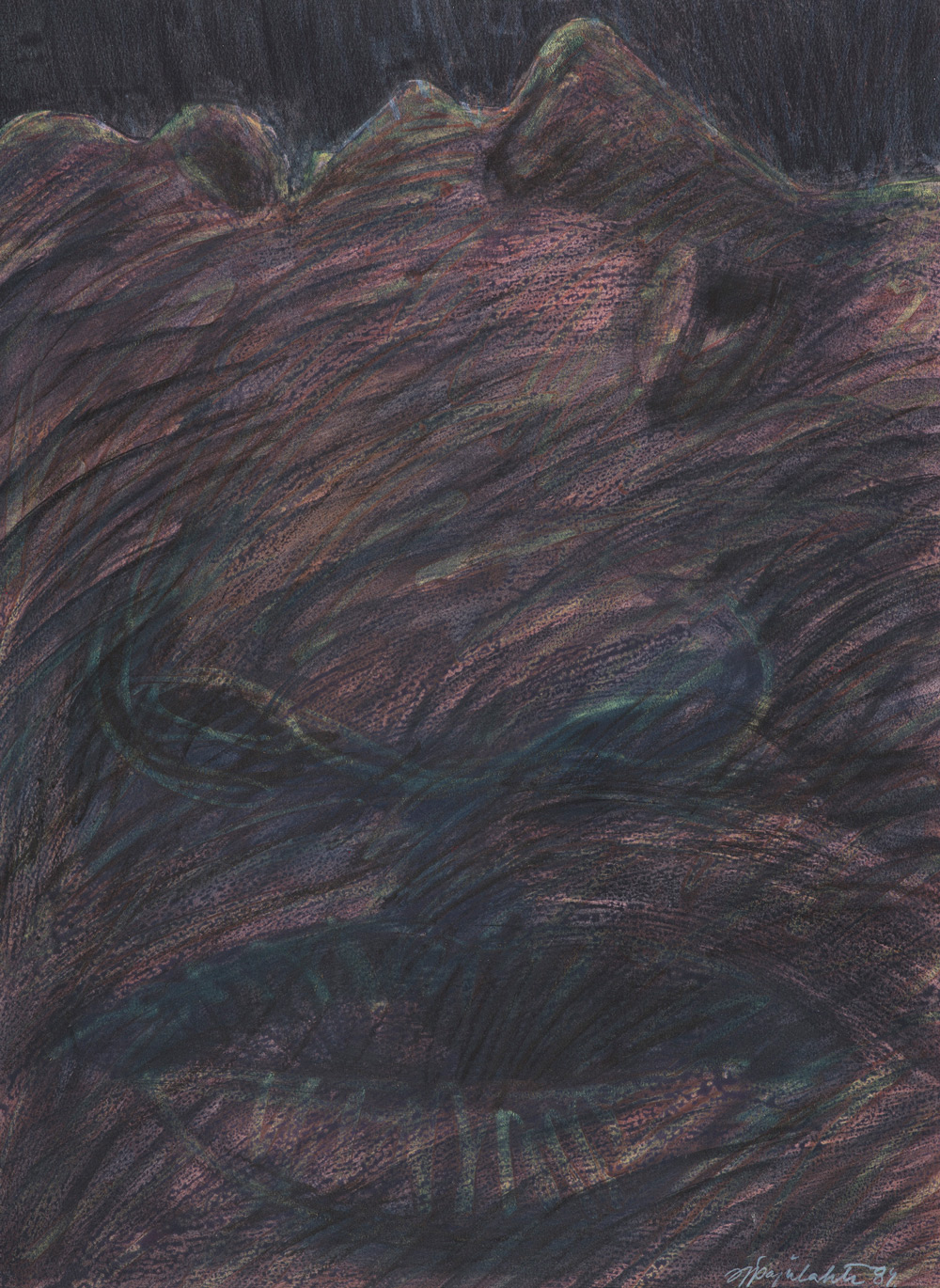
Elina Luukanen: This Moment, 1989
50 x 35 cm
Aquatint
Collections of the Oulu Museum of Art
Photo: Anu Mykkänen
Elina Luukanen (1941–) is a graphic artist who often portrays interiors and moments of stillness in her works. She ended up working in the arts after first studying architecture and the humanities. This Moment is a view of a corner of the artist’s studio where light plays on pieces of cardboard leaning against the wall.
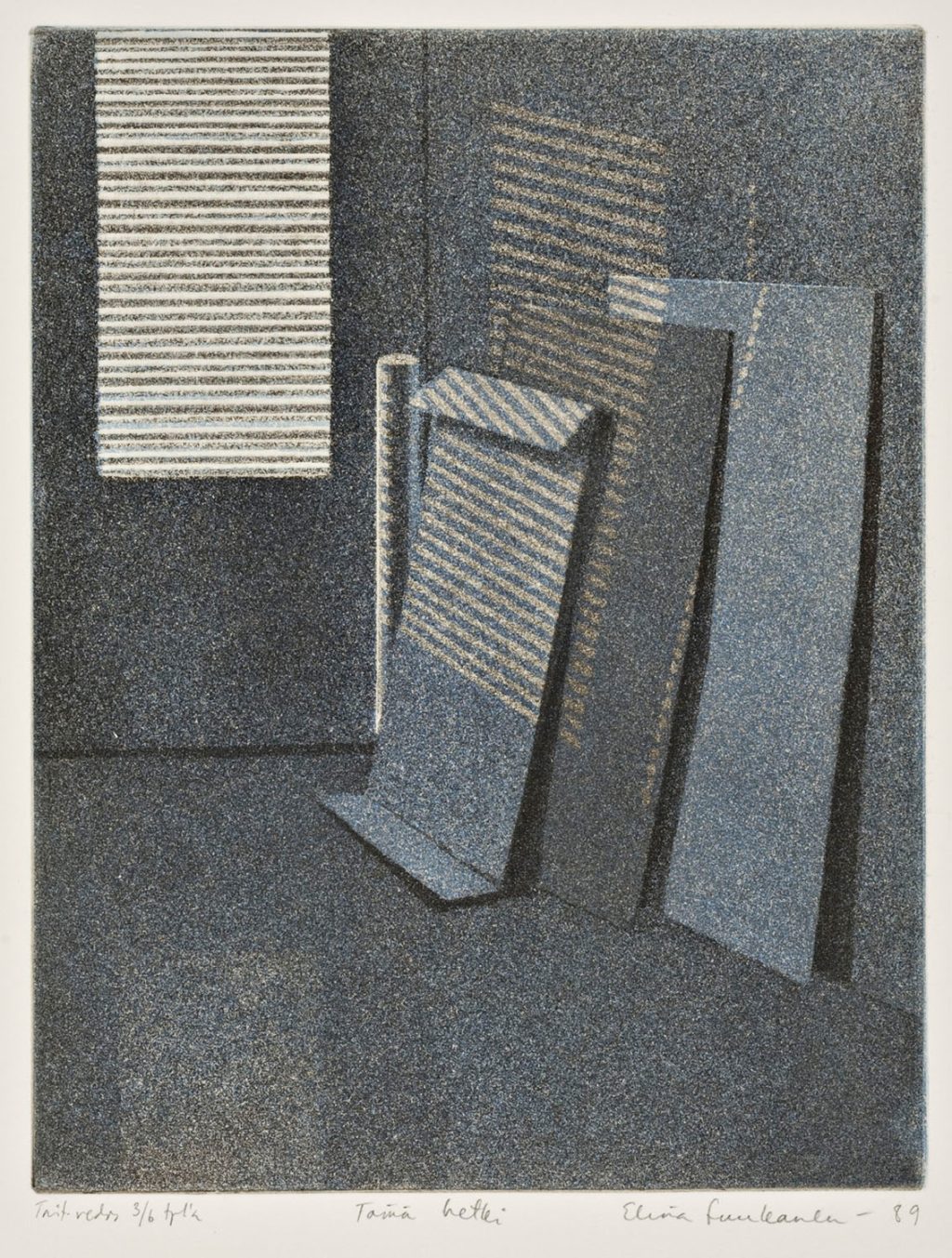
Hassan Maikal: Courage, 2021
1 minute 27 seconds, video poetry
Hassan Maikal (1996–) is an artist who has a desire to make a difference in social matters and the skill to put life around him into words. His career started in Helsinki at the Kontula community centre where word soon spread of a fascinating new artist who believed in the power of community and sharing. In his music, Hassan Maikal combines rap and R&B to afro influenced pop melodies.
Inari Krohn: The Disappearing, 1991
73.6 x 62.2 cm
Line etching and aquatint on paper
Collections of the Oulu Museum of Art
Photo: Anu Mykkänen
Inari Krohn (1946–) is a painter and a graphic artist who combines watercolour woodcut and line etching techniques in her works, producing an aquarelle-like result. In her works, Krohn often explores nature and the relationship between humans and nature: ”We cannot see nature as something external to us – we are part of it”, she says.
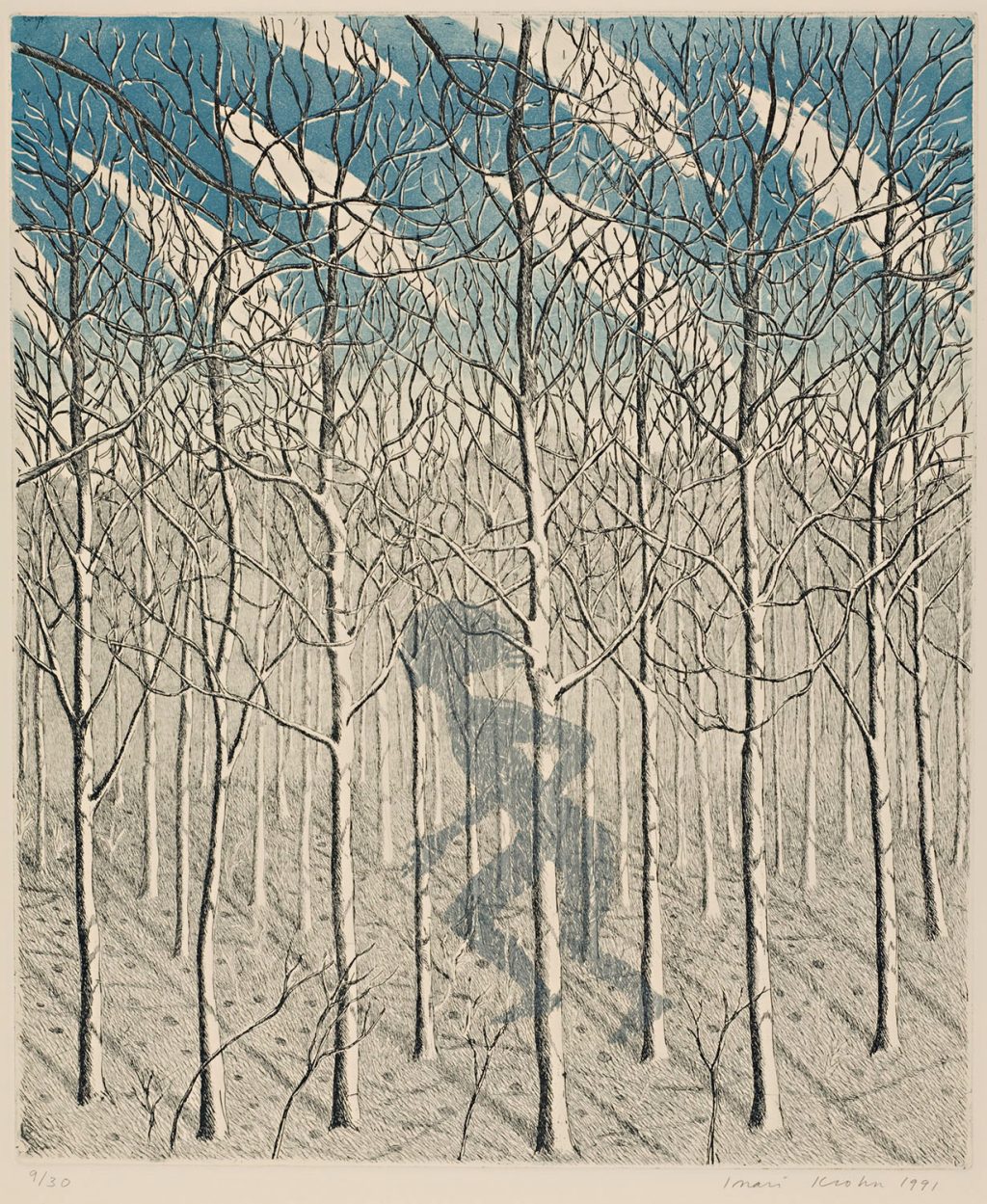
Aino Kannisto: Untitled (A Woman Smoking), 1999
78 x 101 cm
Chromogenic colour print on aluminium
Collections of the Oulu Museum of Art
Photo: Mika Friman
Aino Kannisto (1973–) is a photographer who works with staged photographs. The figure of a solitary woman is the recurring element in her works. The artist herself plays the fictional protagonist of her photographs in imagined situations.
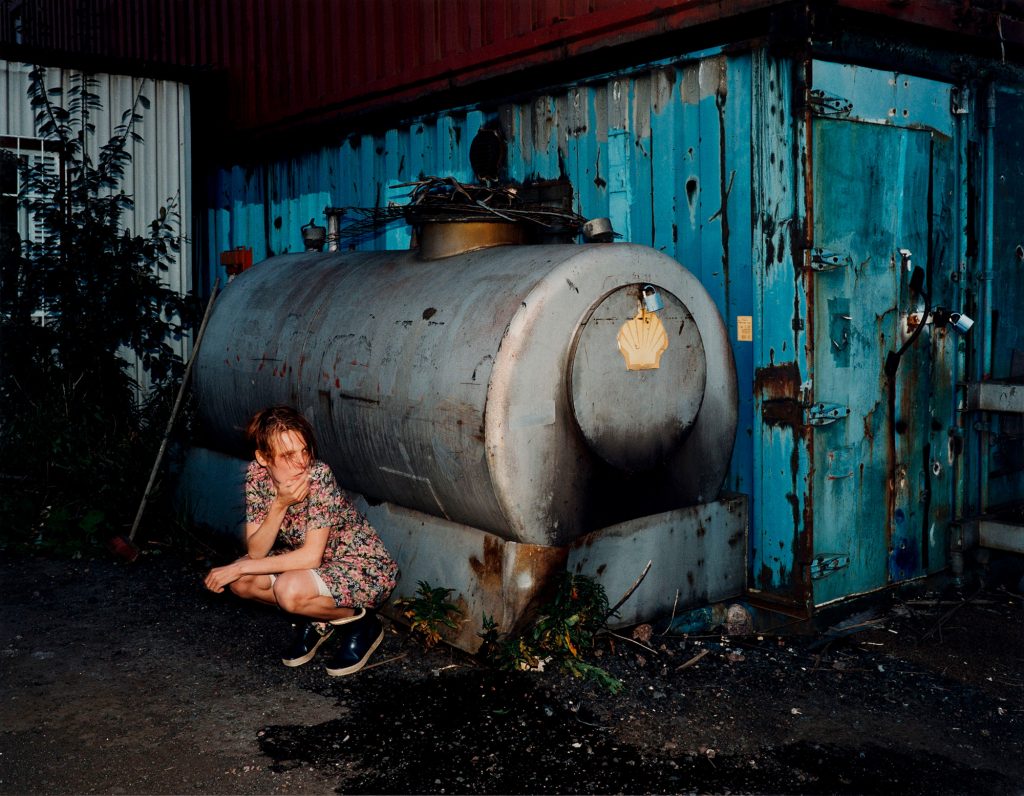
Minka Argillander: Autumn, 2002
60 x 80 cm
Acrylics and oils on fabric glued on plywood
Collections of the Oulu Museum of Art
Photo: Mika Friman
Minka Argillander (1978–) is painter whose works in the collections of the art museum are primarily portraits and self-portraits. Agrillander’s works are highly symbolic. Portraying the figure in the foreground in much more detail than the simple backgrounds consisting of a few elements only is very typical of her paintings.

Elsa Tölli: New York 1, 2017
1 minute 52 seconds, video poetry
Elsa Tölli is a poet and a performing artist. They have made performances and poetry videos for art festivals and performed as a stage poet, and they were one of the artists in the Nuoret 2023 young artists’ exhibition in Helsinki. Their heart beats for risky sensitivities, forgotten singer divas and a deconstruction of the act of performing. At the heart of their work is a full embrace of life. Elsa Tölli published their award-winning debut collection Fun Primavera in 2020 and is now finishing their second collection.
Sinikka Tuominen: Shade (from series “Desert”), 2008
160 x 125 cm
Acrylics on fabric
City of Oulu Art Collection
Photo: Mika Friman
Sinikka Tuominen (1947–) is a painter who paints large, abstract colourful images often characterised by lace-like serial patterns. Shade, the artwork seen in the exhibition, is part of a four-part series named Desert; the other instalments of the series are Noon, Sand and Moonlight. Deserts have always fascinated Sinikka Tuominen. According to the artist herself it probably comes from the Western films she watched as a child. As examples of interesting deserts she mentions the Sonora, the Colorado and the Mojave.
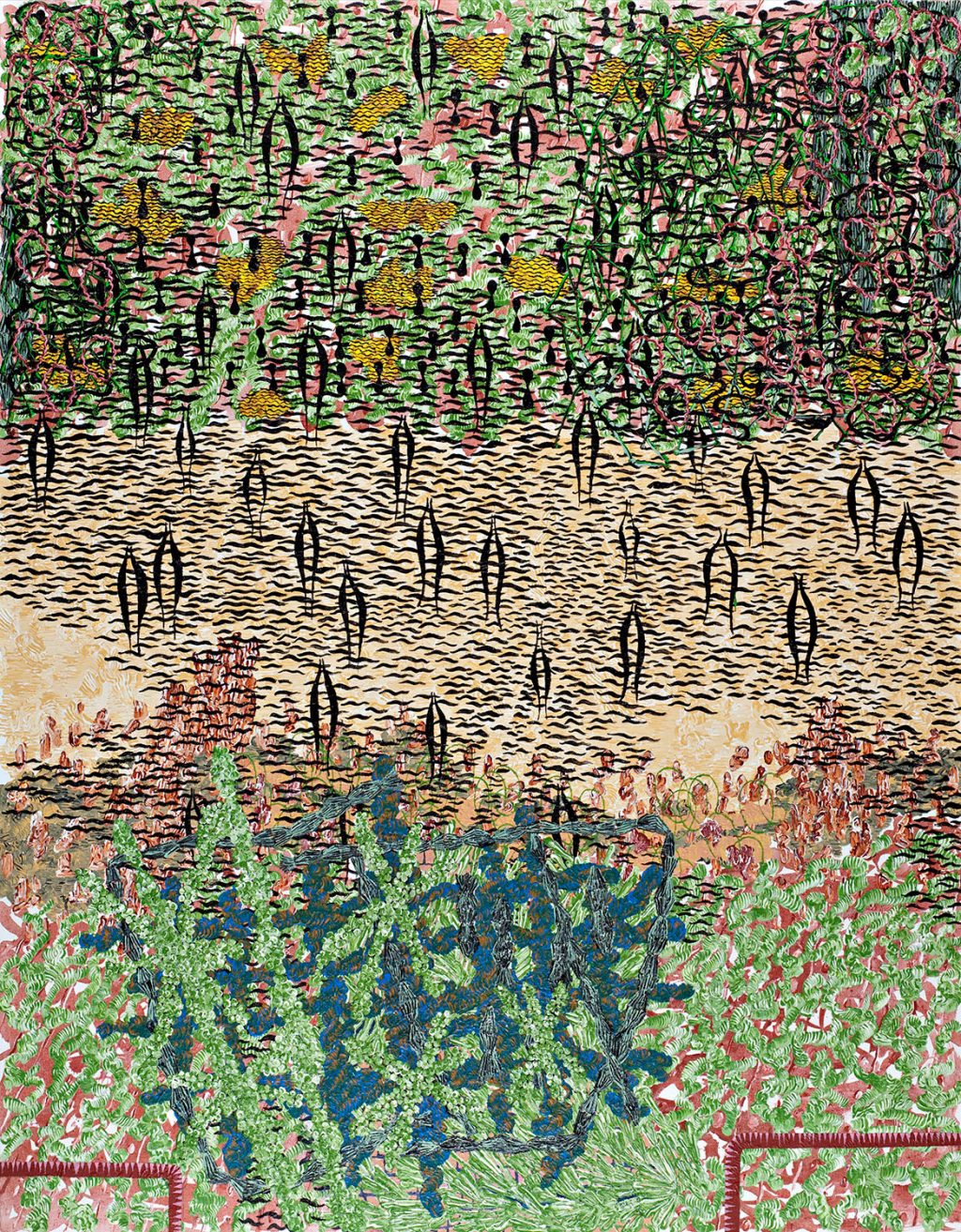
Minka Argillander: Butterfly, 2001
16.3 x 11.5 cm
Watercolours on paper
Collections of the Oulu Museum of Art
Photo: Mika Friman
Minka Argillander (1978–) is painter whose works in the collections of the art museum are primarily portraits and self-portraits. Agrillander’s works are highly symbolic. Portraying the figure in the foreground in much more detail than the simple backgrounds consisting of a few elements only is very typical of her artistic output.
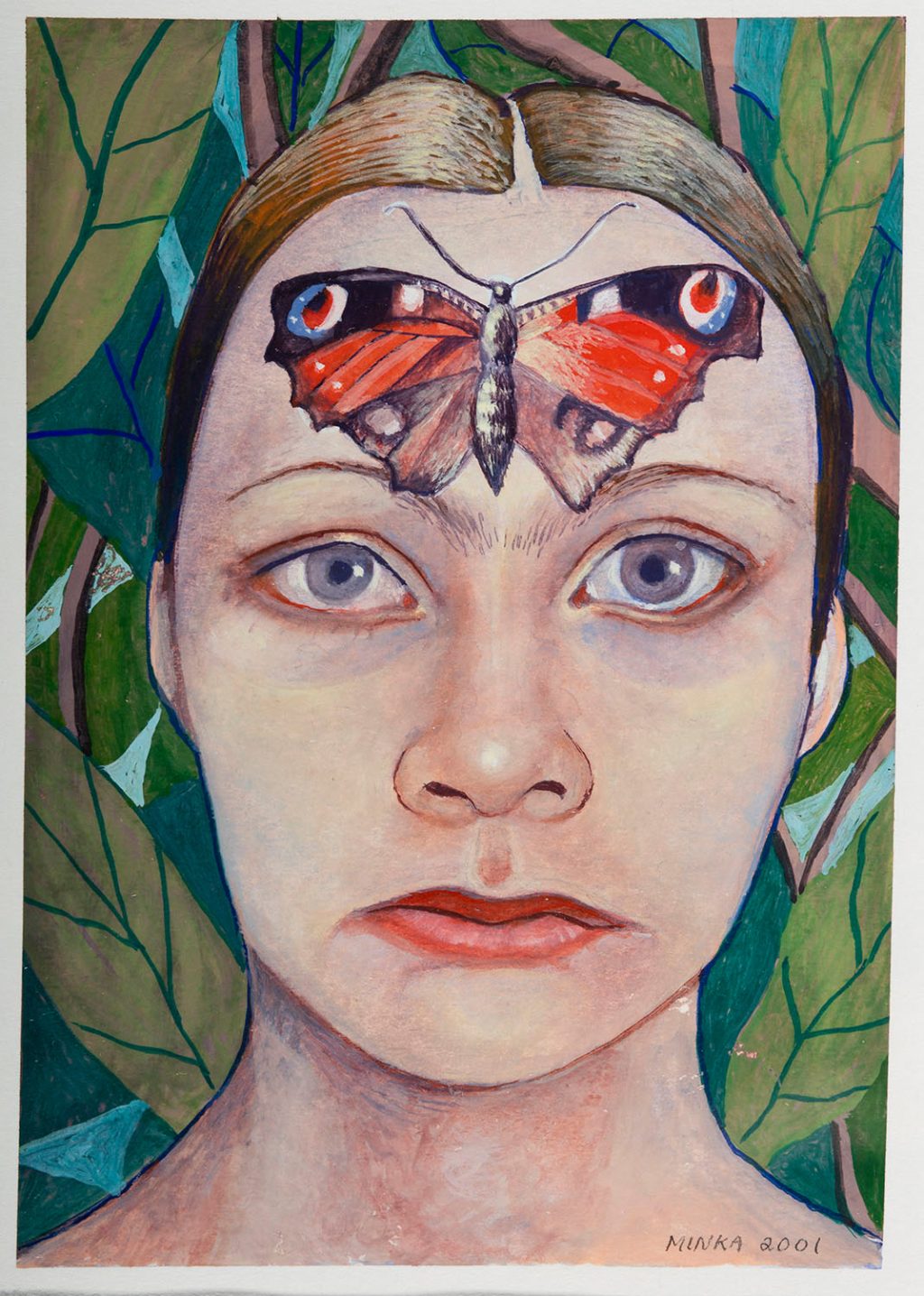
Anna Tuori: Sure It´s Empty, 2011
129,7 x 150,3 cm
Acrylics and oils on MDF board
Collections of the Oulu Museum of Art
Photo: Mika Friman
Anna Tuori (1976–) is an artist who, in her own words, is interested the uncanny, the moments when something familiar suddenly starts to appear strange or terrifying. In her dreamlike paintings Tuori often explores the boundaries of real and unreal, situations where things start to slip and change meaning.
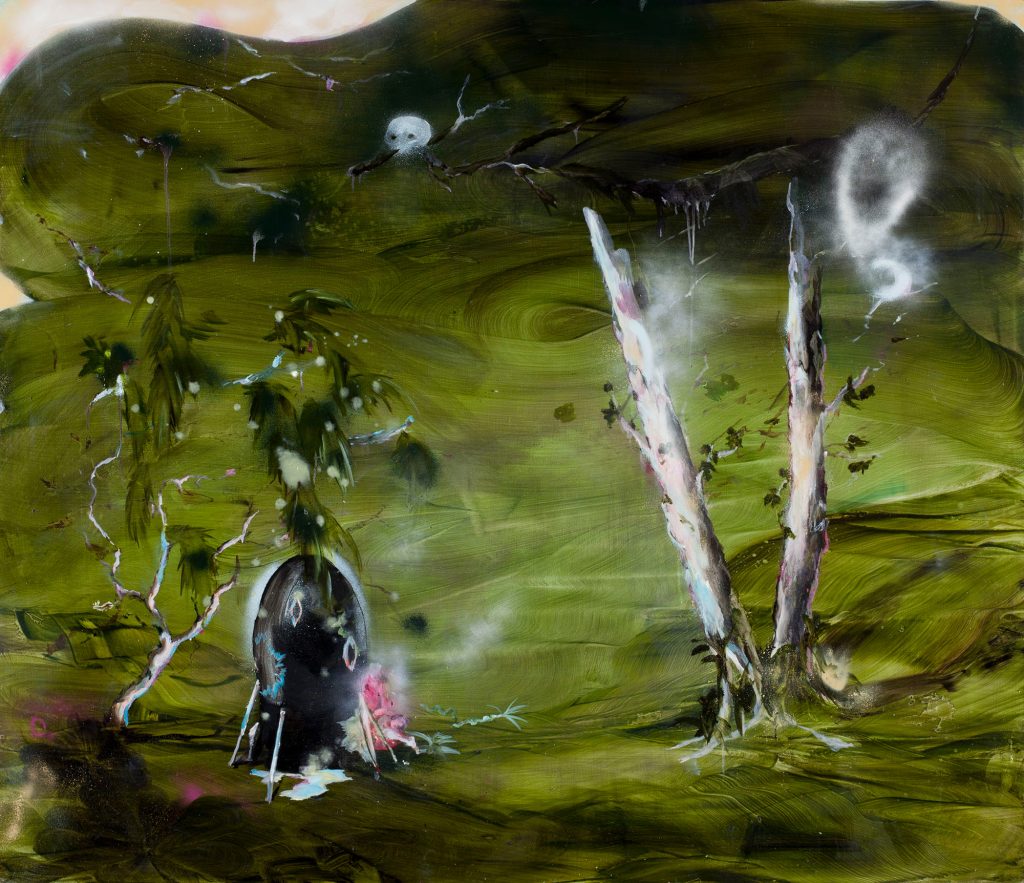
Minkki Nurmi: I Want to Belong (a spread from the sketchbook), 2021
41.0 x 29.5 cm
Felt pens on paper
Photo: Minkki Nurmi
Minkki Nurmi (1984–) is a non-binary, neurodiverse artist and a gardener. In their works they use their personal experiences to reflect on existence; the connections between the self, the others and everything around us. They create their art primarily by drawing and writing. They are fascinated by nature, forests, the subconscious and feelings of strangeness, gentleness, loneliness and connection.
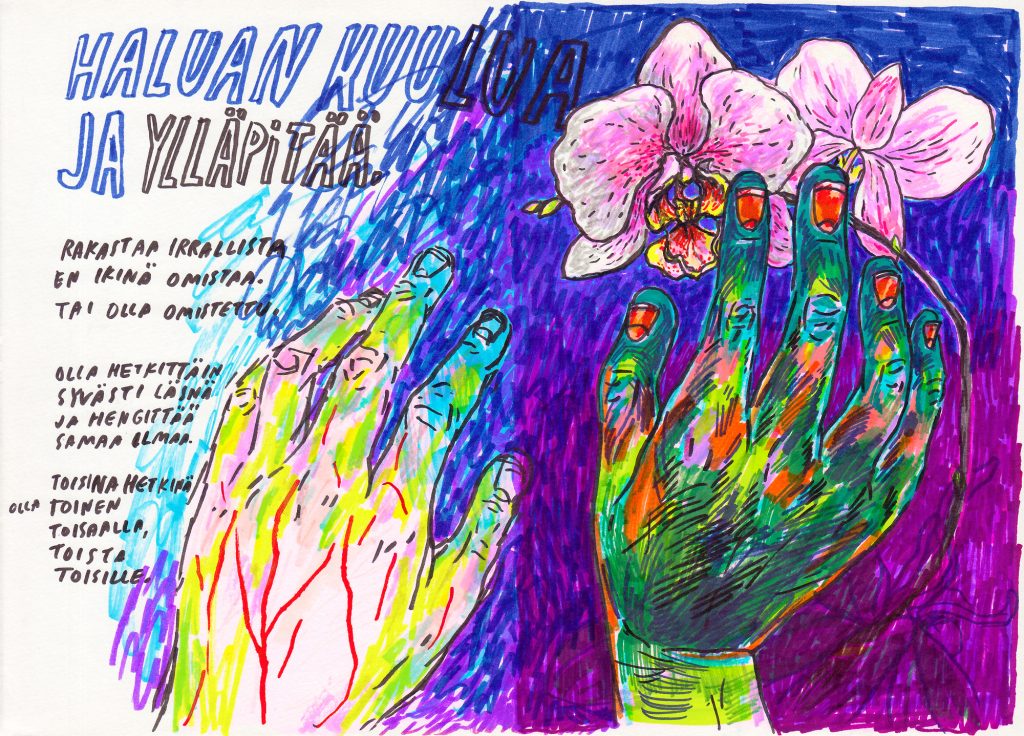
Minkki Nurmi: Many Instead of One (a spread from the sketchbook), 2021
29.3 x 20.6 cm
Felt pens on paper
Photo: Minkki Nurmi
Minkki Nurmi (1984–) is a non-binary, neurodiverse artist and a gardener. In their works they use their personal experiences to reflect on existence; the connections between the self, the others and everything around us. They create their art primarily by drawing and writing. They are fascinated by nature, forests, the subconscious and feelings of strangeness, gentleness, loneliness and connection.
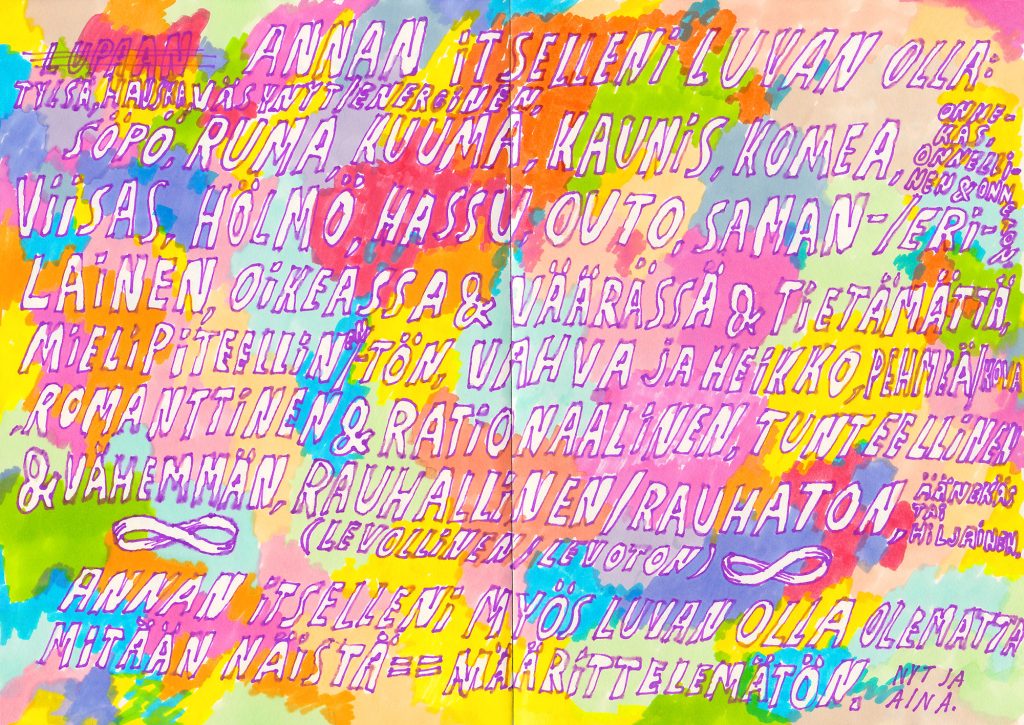
Minkki Nurmi: Many Instead of One (a spread from the sketchbook), 2021, photograph: Minkki Nurmi
Esko Männikkö: Untitled (from series “Organized Freedom”), 2015
98 cm x 139 cm
Ink jet on paper
Collections of the Oulu Museum of Art
Photo: Esko Männikkö
Esko Männikkö (1959–) is a self-taught photographer who also prints and frames his photographs himself. He often works in a serial format, and his subjects have included the environmental catastrophe of the Kola Peninsula, people living in remote areas, rusty cars and zoo animals. In his series Organised Freedom, started in 1999, he explores sense of place and identity and how they are constructed.
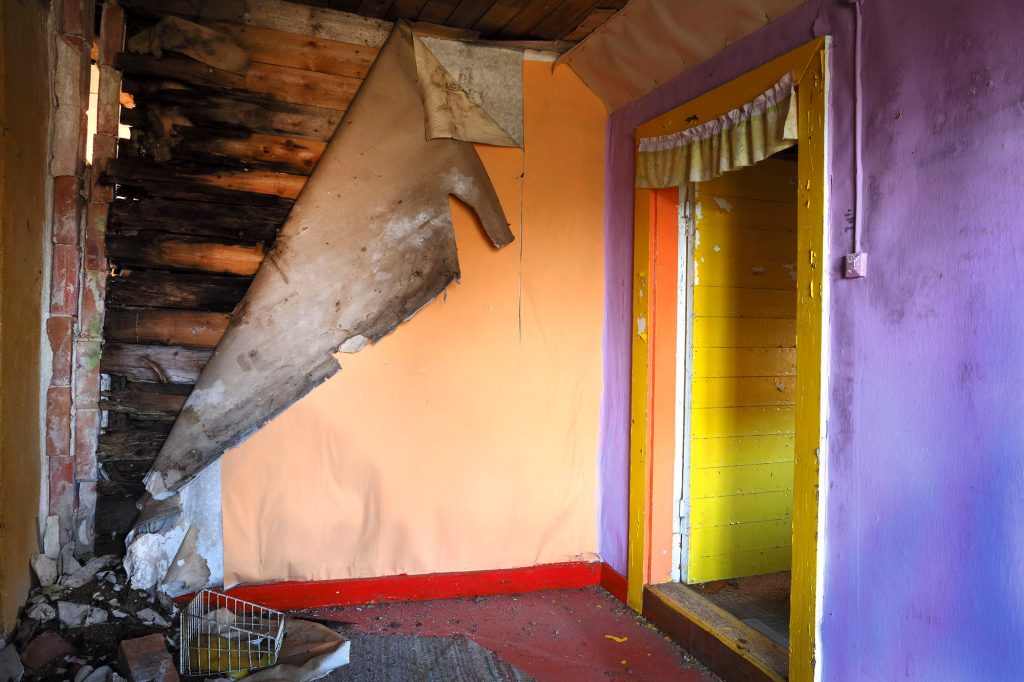
Learning material
Background information and activities
The online exhibition is a scrollable whole that combines visual art, moving image and poetry. Artworks from the collections of Oulu Museum of Art are juxtaposed with three invited artists of the new generation who all explore the boundaries of poetry, literary art and song lyrics. Their works open different perspectives to the notion of courage.
Is courage same as bravery?
What does it take to be brave?
Do I have courage?
The flow of images and poetry convey the viewer from one emotion to the next through different shades of courage. The works by Hassan Maikal, Elsa Tölli and Minkki Nurmi explore the subject in relation to their own voices, how to find it, and how to have the courage to use it.
The exhibition has been designed for a smartphone, a tablet or web browser.
Suggested topics for discussion in connection with the exhibition
How are the artworks linked to the notion of courage? Look at the artworks and discuss what themes or clues related to courage you can identify.
The artworks of the exhibition evoke different moods and emotions. What moods or emotions can be related to courage?
Watch and listen to the video poems by Hassan Maikal and Elsa Tölli. What kind of courage do they talk about?
Ideas for activities
Opinion scale (20 minutes)
Sheets of paper with words “AGREE” and “DISAGREE” are pinned up on opposite walls of the space. An imaginary scale runs between the two sheets of paper with the middle ground standing for “I don’t know”. Anyone in the group can lead the activity. The task of the leader is to read out loud the following statements, after which the participants move on the scale closer to the sheet of paper that matches their opinion on the statement.
After each statement, you can have a short discussion on thoughts raised by the statement and on factors that influenced the decisions where to position yourself on the scale.
The statements:
There have been times when I have been brave.
I am brave enough to voice my opinions in a group of friends.
Courage and audacity (taking unwise risks) are the same thing.
It takes courage to be true to yourself.
Courage is something that you can see in a person.
Courage is always good.
It takes courage to defend those who are weaker than you.
Dreaming (5 minutes)
Dreaming is fantasizing and thinking about things and goals that are important to you. All you need to dream is time. Stop for a moment and listen to yourself. What do you need? What are you dreaming of? How can you fulfil your dream? What are you hoping for?
This activity can be done alone without any sharing.
Self-portrait (20–30 minutes)
Watercolour paper, watercolours and waterproof pens or crayons Or: smartphone, computer or tablet and online application from this link.
Minkki Nurmi’s Many Instead of One (a spread from the sketchbook) (2021) can be thought of as the artist’s self-portrait. Try to produce a self-portrait in a similar style. Pick ten words that describe you from Minkki Nurmi’s artwork. Add any twenty words you like that you feel describe you.
If you work on paper, write the words you choose on A3 paper using a waterproof pen, such as permanent marker, pencil or crayon. Pay attention to the overall composition, the shape you arrange your words in and the size of your letters. Do you use print letters, roundhand or some other style? After you have written the words use the watercolours to paint the background of your self-portrait to your liking.
If you work digitally, open the online application from this link. Type the words you selected from Nurmi’s artwork and the twenty words you have thought up yourself. Choose a font, a background, style and shape for your self-portrait.
An excerpt from the text in Minkki Nurmi’s Many Instead of One (a spread from the sketchbook) (2021): ”I give myself permission to be: boring, fun, tired/energetic, cute, ugly, hot, beautiful, handsome, lucky, happy & unhappy, wise, silly, funny, weird, similar/different, right & wrong & not know, opinionated/opinionless, strong and weak, soft/hard, romantic & rational, emotional & less so, calm/unsettled, noisy or quiet, (peaceful/restless) I also give myself permission to be none of the above = undefined, now and always.”
Writing activity (20–30 minutes)
Pen and paper or smartphone, computer or tablet.
Choose one or more artworks from the exhibition as the starting point of your text. Write what you see when you look at the artwork, what it makes you feel or what you would like to say to the artwork.
If you have trouble starting, you can use the Malay pantoum rhyming scheme: a poem of four verses where repeating verses change positions and meanings. The quatrains of the Pantoum consist of four verses (lines of poem, such as A–D), and the poem usually has four stanzas (1 to 4).
Click this link to read an example Pantoum called ”pantoum: landing 1976” by Evie Shockley.
First stanza:
A
B
C
D
Second stanza:
B
E
D
F
Third stanza:
E
G
F
H
Fourth stanza:
G
C
H
A
